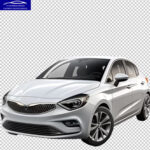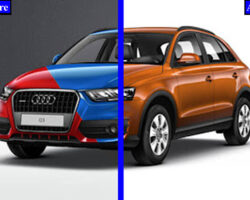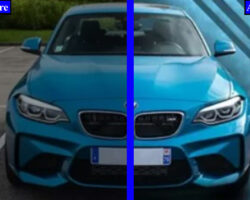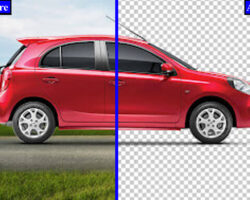How to Draw a Car Shadow? Start by identifying the light source and positioning it properly. Then, trace the outline of the car and add shading using darker tones to create a realistic shadow.
Understanding Car Shadow Basics
Learn the essential tips for drawing car shadows effectively. By understanding the basics, you can create realistic and visually appealing car illustrations.
Achieving realistic drawings requires an understanding of how shadows work. Shadows play a crucial role in depicting depth and dimensionality, making the subject appear more lifelike. In the case of drawing a car, getting the shadows right is essential for creating a convincing and impressive artwork.
To achieve this, you need to grasp the importance of shadows in realistic drawing, comprehend the physics of light and shadow, and understand the impact of directional light on shadows. Let’s delve into the intricacies of car shadow drawing and learn to master this fundamental skill.
Importance Of Shadows In Realistic Drawing
Shadows are more than just dark areas in a drawing; they contribute significantly to its realism. By casting shadows, objects interact with the surrounding light and create a sense of depth and form. When you draw a car, adding shadows in the right places gives it a three-dimensional appearance, making it visually compelling.
Shadows not only provide depth, but they also create a sense of weight and grounding. Without shadows, a car might appear to be floating in an empty space, lacking a connection with the environment. By strategically placing shadows, you can anchor the car to its surroundings, enhancing its realism and believability.
Physics Of Light And Shadow Understanding
To create convincing shadows, it’s essential to comprehend the physics of light and how it interacts with objects. Light travels in straight lines until it encounters an obstacle, such as a car. When light hits an object, it casts a shadow on the side opposite to the light source. By understanding these principles, you can accurately determine the direction, intensity, and shape of shadows when drawing a car.
Remember that the intensity of the light source affects the strength of the shadow. A strong light source creates a crisp and well-defined shadow, while a weaker light source results in a softer, more diffused shadow. By manipulating the intensity of the light source in your drawing, you can create different moods and atmospheres.
Directional Light And Its Impact On Shadows
The direction from which the light is coming plays a crucial role in shaping a car’s shadow. By understanding how light falls on the car’s surface and projecting the shadow accordingly, you can make the drawing look more realistic. There are three main directions of light that you need to consider: front light, side light, and backlight.
In the case of front light, the light source is positioned in front of the car, casting a shadow directly behind it. This creates a clear distinction between the lit and shaded areas, emphasizing the car’s three-dimensionality.
Sidelight occurs when the light source is positioned to the side of the car. In this case, the shadow stretches horizontally, parallel to the car’s shape, adding depth and revealing its form.
Backlight refers to the light source being positioned behind the car. This results in the shadow being cast towards the viewer, obscuring parts of the car and creating a dramatic effect.
Understanding the impact of directional light on shadows allows you to accurately depict the interplay between light and shadow in your car drawing, adding depth, and realism.

Identifying Light Source
To draw a car shadow, start by identifying the light source. Then, determine the direction and intensity of the light to create a realistic shadow in your artwork.
How To Determine The Light Direction
When it comes to drawing a car shadow, one of the most crucial steps is identifying the light source. Understanding the direction of the light will help you create realistic and cohesive shadows on your car drawing. Here, we will discuss two simple methods to determine the light direction.
Method 1: Observation
Observation is an excellent technique to figure out the light direction quickly. Find a reference object or scene with visible shadows. Many times, the sun is the primary light source for outdoor scenes. In such cases, note the position of the sun and how the shadows fall on the object. Based on the angle and length of the shadow, you can determine the position of the light source.
Another way to observe the light direction is by paying attention to highlights and shadows on objects around you. Notice where the brightest spot is and where the shadows are cast. The areas with highlights indicate the direction the light is coming from.
Method 2: Shadow Logic
If observation is not feasible or conclusive, you can rely on the logic of shadows. Imagine a light source as a point in space emitting rays in all directions. The rays that hit an object will create shadows.
To determine the light direction using shadow logic, follow these steps:
- Identify the position of the object in question.
- Visualize the imaginary rays coming from the light source.
- Imagine how these rays would interact with the object and cast shadows.
- Based on the placement and length of the shadows, determine the position of the light source.
Varying Shadow Intensity With Different Light Sources
Now that you have identified the light direction, understanding how different light sources affect shadow intensity is essential. Different light sources produce varied shadows, which can enhance or alter the overall appearance of your car drawing. Let’s explore the impact of three common light sources on shadow intensity.
Natural Sunlight
Natural sunlight is generally the strongest light source, creating distinct shadows with sharp edges. The intensity of the shadow varies based on the angle and position of the sun. Shadows cast by sunlight can contribute to the depth and realism of your car drawing.
Artificial Indoor Lighting
Artificial indoor lighting, such as lamps or ceiling lights, typically generates softer shadows compared to natural sunlight. These shadows tend to have less defined edges and are gentler in appearance. When drawing a car shadow under artificial indoor lighting, consider the placement and type of light source to ensure realistic results.
Overcast Sky
An overcast sky provides diffused light, resulting in softer and less pronounced shadows. The reduced contrast between highlights and shadows can give a more muted effect to your car drawing. However, it is essential to pay attention to the direction of the light source, even in overcast conditions, to maintain consistency in your artwork.
Remember, mastering shadow intensity contributes significantly to the overall realism and three-dimensionality of your car drawing. By understanding and adapting to different light sources, you can create visually stunning and impressive car shadows.
How To Sketch Car Shadow Placement
Drawing a car shadow is a crucial aspect of creating a realistic and three-dimensional representation of a car. It adds depth, realism, and grounding to the overall drawing. Therefore, mastering the art of car shadow placement is essential for aspiring artists. In this section, we will explore three key factors that contribute to achieving accurate and convincing car shadow placement. These factors include proximity to the car, size and shape dynamics, and the impact of the ground surface on the shadow.
Proximity To The Car
The proximity of the car shadow in relation to the vehicle itself plays a significant role in creating a believable drawing. Understanding the distance between the car and its shadow helps establish a sense of space and realism in the artwork. Here are some points to consider:
- The closer the car shadow is to the vehicle, the darker and sharper it generally appears.
- If the sun or light source is directly above the car, the shadow may appear directly beneath it, elongating the shape.
- In instances where the light source is at an angle, the car shadow may be offset to one side, depending on the direction of light.
Size And Shape Dynamics
Properly understanding the size and shape of a car shadow is crucial for achieving a realistic representation. Consider the following points:
- The size of the car shadow is influenced by the height of the car and its distance from the ground.
- A low car will cast a longer shadow than a taller car due to the lower angle of the light source.
- The shape of the car shadow will mirror the shape of the car but with distortions caused by perspective and the angle of the light.
- Take note of any reflective surfaces on the car that may affect the shadow’s form, such as curved windows or shiny surfaces.
Ground Surface Impact On Shadow
The type of ground surface on which the car is placed can significantly impact the appearance of the shadow. Consider the following factors:
- A rough or uneven ground surface may cause the shadow to appear broken or jagged, reflecting the irregularities of the ground.
- A smooth and flat surface, such as a polished floor, may result in a clean and uninterrupted shadow.
- Consider the color and texture of the ground, as it can influence the hue and the overall character of the shadow.
- Depending on the lighting conditions and the presence of surrounding objects, the ground surface may cast secondary shadows or reflections onto the car shadow, adding complexity to the scene.
How To Draw Different Car Shadows
Drawing car shadows can greatly enhance the realism and depth of your car illustrations. The way a car shadow is depicted can vary based on the shape and type of car you are drawing. In this article, we will explore the influence of car shape on shadow and learn how to create shadows for different car types.
Influence Of Car Shape On Shadow
The shape of a car plays a crucial role in determining the appearance of its shadow. Each car shape has its own unique characteristics that affect how light interacts with its surfaces. Understanding these influences will help you create accurate and convincing shadows in your drawings.
- The height and angle of the car’s roofline can affect the length and direction of the shadow.
- The curvature of the car’s body panels can create variations in the intensity and softness of the shadow.
- The position and size of the car’s windows can also impact the shadow, especially when light passes through them.
By studying and observing these elements, you can better grasp how the car’s shape influences the shadow it casts.
Creating Shadow For Different Car Types
Once you understand the influence of car shape on shadows, you can start creating shadows for different car types. Whether you are drawing a sleek sports car or a bulky SUV, the general process remains the same, but there are some specific nuances to consider.
- Analyze the light source: Identify the direction and intensity of the light source in your drawing. This will determine where the shadow will be cast.
- Sketch the basic car shape: Begin by outlining the car’s main body shape and silhouette on your drawing surface. Keep in mind the perspective and angle from which you are drawing.
- Add contours and details: Develop the car’s form by adding contours and details, such as wheels, windows, and other defining features.
- Identify shadow areas: Based on the shape and location of the light source, identify the areas of the car that will be in shadow. These areas will appear darker than the rest of the car.
- Create the shadow: Start shading the shadow areas by using a slightly darker tone than the base color of the car. Blend the shadow smoothly to make it look realistic.
- Refine and adjust: Continuously assess and refine your shading, paying attention to the shape and transitions within the shadow. Use reference images if needed to improve the accuracy of your shadow.
Remember that practice is key when it comes to drawing car shadows. The more you observe and experiment with different car shapes, the better you will become at capturing their unique shadows.
Shadow Shading Techniques
When it comes to drawing a car, one crucial element that adds depth, dimension, and realism to your artwork is the inclusion of shadows. Properly executed shadows can make your car drawing pop and give it a sense of grounding. In this section, we will explore different shadow shading techniques that can take your car drawings to the next level.
Soft Shadow Vs Hard Shadow
When shading shadows, it is important to understand the distinction between soft shadows and hard shadows. Soft shadows are characterized by gradual transitions and a diffuse edge, while hard shadows have sharp edges. The choice between the two will depend on the lighting conditions and the desired effect you want to achieve in your car drawing.
If you aim to create a soft and natural lighting scenario, soft shadows are an excellent choice. Soft shadows can be achieved by lightly blending and feathering the edges of the shadow with your drawing tool. This technique creates a smooth transition between the object and its shadow, resulting in a more realistic appearance.
On the other hand, if you want to convey a harsh and direct light source, hard shadows are the way to go. Hard shadows have a distinct and crisp edge that creates a bold visual impact. To achieve this effect, emphasize the sharpness of the shadow’s edge by keeping your shading strokes more defined and cleaner.
Gradation For Realism In Shadows
One essential technique for achieving realism in shadow shading is gradation. Gradation involves smoothly transitioning from light to dark tones within the shadow, creating a sense of volume and structure. By carefully observing the reference image or the car itself, identify the areas where the shadow gradually gets darker and apply lighter strokes followed by darker ones in a controlled manner.
Remember to consider the direction and intensity of the light source when applying this technique. Shadows that are farther away from the object may exhibit a lighter gradation, while shadows closer to the object may appear darker.
Texture Inclusion For Ground Shadows
When drawing a car shadow, it is important to take into account the texture and surface on which the car is situated. Ground shadows can add dimensionality and enhance the realism of your artwork. To create convincing ground shadows, consider the texture of the surface, such as rough asphalt or smooth concrete, and incorporate appropriate shading techniques.
For rough surfaces like gravel or cobblestone, use a broken or dashed stroke to imply the uneven texture. On the other hand, for smooth surfaces like polished roads, apply smoother and more even strokes to portray the reflective nature of the ground.
In conclusion, mastering shadow shading techniques is vital to elevating your car drawings. Understanding the distinction between soft and hard shadows, implementing gradation, and considering the texture of the ground shadows will help you create dynamic and realistic artworks.
Perfecting The Car Shadow Illusion
Adding a shadow to a drawing of a car can make it appear more realistic and three-dimensional. The car shadow illusion is an important technique to master for any aspiring artist. In this article, we will dive deeper into the art of creating a perfect car shadow. From refining the edges to blending the shadow seamlessly with the car, we will cover all the key steps you need to follow to achieve professional-looking results.
Refining Edges For A Natural Look
When drawing a car shadow, one of the key elements to focus on is refining the edges. To create a more natural and realistic look, pay attention to the following:
- Start with a rough outline of the car’s shape and position the shadow accordingly. Make sure to consider the direction and angle of the light source.
- Use a soft pencil to lightly draw the shadow shape, emphasizing the main forms and contours of the car.
- To achieve a smooth transition between the car and its shadow, carefully blend the edges together using a blending stump or a soft brush. This will provide a seamless transition between the two elements and enhance the overall realism of your drawing.
- Always refer to reference images or real-life observations to ensure accurate shadow placement and shape.
- Lastly, remember that shadows are rarely solid black. To create a more realistic effect, gradate the shadow’s intensity, with the darkest parts closest to the car and gradually getting lighter as the shadow spreads away.
Final Touches: Blending Shadow With The Car
Now that you have refined the edges of the car shadow, it is time to focus on the final touches to achieve a seamless blend between the car and its shadow. Here are some tips to consider:
- Pay attention to the values and shading of the car itself. Ensure that the shadow aligns with the car’s lighting and tonal values. This will help create a unified and realistic look.
- Use a soft pencil or a blending tool to carefully blend and smooth out any harsh lines or transitions between the car and its shadow. This will create a sense of depth and make the shadow appear more integral to the overall composition.
- Regularly step back and assess your drawing from a distance. This will help you identify any areas that may require further refinement and adjustments.
- Don’t be afraid to experiment and try different techniques to achieve the desired effect. Each drawing may require unique approaches based on the lighting conditions and the car’s shape and material.
By following these steps and practicing regularly, you will gradually improve your ability to create a perfect car shadow. Remember to have patience and enjoy the process, as mastering this technique will open up new possibilities for your car drawings.
Troubleshooting Common Shadow Drawing Mistakes
Overcoming Disproportion In Shadow
One common mistake when drawing a car shadow is creating disproportionate or exaggerated shadows. This can make the drawing look unrealistic and unbalanced. To overcome this issue, follow the steps below:
- Study real-life car shadows: Observing how shadows appear in real life will help you understand their shape and size in relation to the car’s form.
- Use references: Refer to photographs or images of cars and their shadows to get a better sense of how shadows fall on different car parts.
- Sketch outlines first: Start by drawing the car’s main outline before focusing on the shadows. This way, you can maintain the car’s proportions and prevent the shadow from overpowering the drawing.
- Gradually build up shadows: Instead of drawing the shadow in one solid mass, start with a faint outline and gradually add depth and darkness to achieve a more realistic effect.
- Compare and adjust: Regularly compare your drawing to the reference image to check for any disproportions. Make necessary adjustments to ensure the shadow aligns with the car’s form.
Dealing With Inconsistent Light Direction
Another common mistake that can ruin the overall effect of your car shadow drawing is inconsistent light direction. If the light source is not consistent throughout the drawing, the shadow will appear disjointed and confusing. Follow these steps to maintain a consistent light direction:
- Choose a light source: Determine the direction from which the light is coming. It could be from the top, side, or any other angle. This will be the consistent light direction for your entire drawing.
- Study light and shadow relationships: Understand how light interacts with objects to cast shadows. Take note of how highlights and shadows are affected when the light source changes.
- Draw the main light pattern: Start by sketching the main light pattern on the car, considering the consistent light direction you chose. This will act as a guide for placing shadows correctly.
- Keep shading consistent: While shading, ensure that all shadows align with the chosen light direction. Shadows should be consistent in shape, length, and depth to maintain a realistic effect.
- Avoid conflicting shadows: Be aware of the overlapping shadows, particularly in complex areas. If two objects are in close proximity to each other, their shadows may intersect or merge slightly.
Shadow Density Adjustments, Ensuring
Shadow density is crucial for creating a convincing illusion of depth and volume in your car shadow drawing. Here are some techniques to help you achieve the right shadow density:
- Observe light intensity variations: Pay attention to areas of the car that receive less light, such as crevices or beneath the car itself. Shadows in these areas should be darker and denser.
- Use cross-hatching or stippling techniques: Cross-hatching and stippling are effective methods to create varying densities and textures in your shadow. Practice these techniques to add depth to your drawing.
- Layer shadows gradually: Instead of applying a heavy layer of shadow right away, build up the density step by step. This allows you to have more control over the shading and creates a more realistic effect.
- Consider the light source: Shadows should be denser closer to the object casting them and gradually lighten as they move away. By understanding the position of the light source, you can adjust the shadow density accordingly.
Frequently Asked Questions (FAQs)
How Do You Create A Car Shadow In A Drawing?
To create a car shadow in a drawing, start by identifying the light source and adding shading accordingly.
What Is The Purpose Of Drawing A Car Shadow?
Drawing a car shadow adds depth and realism to your artwork, making it appear more three-dimensional.
Can Shadows Be Different Shapes For Different Cars?
Yes, shadows can vary in shape and size depending on the angle and position of the car in relation to the light source.
How Do You Determine The Direction Of The Car Shadow?
To determine the direction of the car shadow, consider the position of the light source and the car’s orientation.
Which Drawing Techniques Can Enhance Car Shadows?
Utilizing techniques like cross-hatching or stippling can enhance the realism and texture of car shadows in drawings.
Can You Draw A Car Shadow Without Reference?
While reference images can be helpful, it’s possible to draw a car shadow without them by understanding light and shadow principles.
How Can Shadows Create A Sense Of Motion In A Car Drawing?
By elongating the car shadow in the direction of motion, you can create a sense of movement and dynamic energy in your drawing.
What Are Some Common Mistakes To Avoid When Drawing Car Shadows?
Common mistakes to avoid include placing the shadow inconsistently with the light source and neglecting to add variations in shading.
How Can Shadows Affect The Overall Composition Of A Car Drawing?
Shadows can affect the composition by highlighting the car’s form, creating contrast, and guiding the viewer’s attention.
Are There Any Tips For Capturing The Subtleties Of A Car Shadow?
Pay attention to the gradations of shading, soft edges, and color variations within the shadow to capture its subtleties in your drawing.
Conclusion
Drawing a car shadow may seem like a daunting task, but with the right techniques, it can be easily achieved. By understanding the principles of light and shadow, practicing various shading techniques, and being patient with your artwork, you can create realistic car shadows.
Remember, practice makes perfect, so don’t be discouraged if you don’t get it right the first time. With time and dedication, you’ll be able to master the art of drawing car shadows and take your artwork to the next level.
Start experimenting and let your creativity shine!






